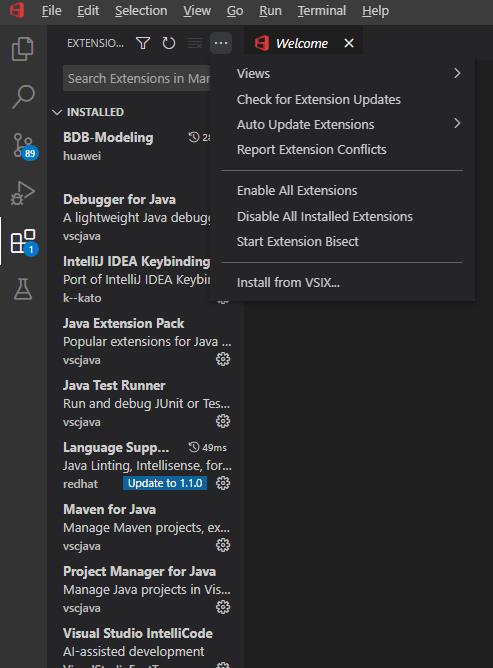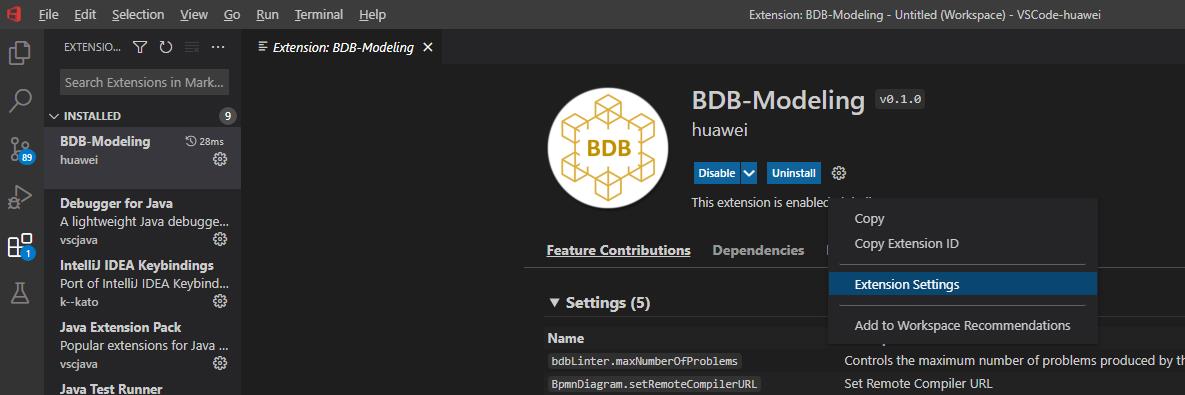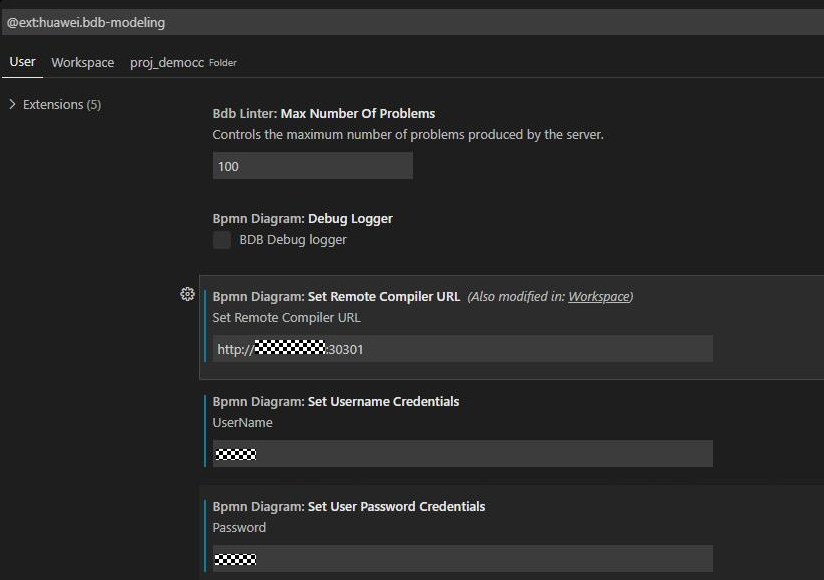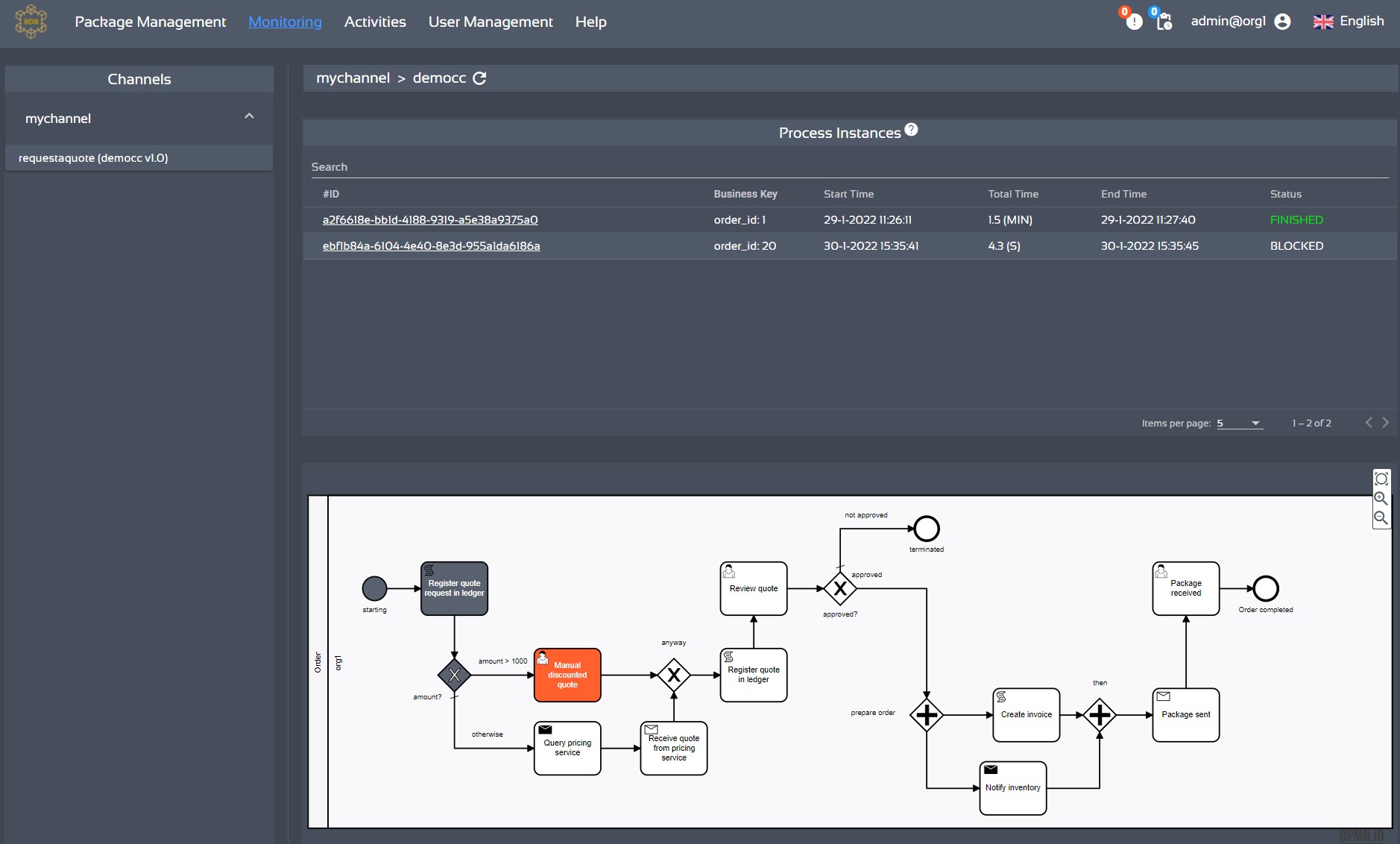Usage Description
This section describes the process of low-code development. To use this function, contact technical support to obtain the tool package BCS-BPMN.zip and the license.
- Deploy the backend service.
- Log in to the CCE console.
- Create a CCE cluster. Buy an Ubuntu VM with 16-core CPU and 32 GB memory.
- Select a cluster node, bind an EIP to the node, set security group rules for the node, add an inbound rule for TCP port 9096, and enable the Kubernetes service port. Set the port number to a value ranging from 1 to 32767.
- Save the license file to the / directory on the VM, decompress the tool package BCS-BPMN.zip to the /root directory, and run the one-click deployment script /root/BCS-BPMN/.build_config/one_step_deploy.sh.
- Decompress the BCS-BPMN.zip tool package in Windows.
- Install the tool package.
Start the VScode, click the expansion box on the left, click the three dots in the upper right, click Install from VSIX, and select BCS-BPMN\extension\BDB-Modeling-0.1.0.vsix.

- Configure the extension.
Click Extension Settings to set the Remote Compiler URL (http://{Tenant VM EIP}:30301), UserName, and Password.


- Import the demo.
Choose EXPLORER > BDB MODELING > Import Folder, and select BCS-BPMN\demo\projects\democc\modeller-workspace\proj_democc.

- Compile a BPMN diagram to generate a contract.
You can draw a BPMN diagram that meets your service requirements by referring to the example. After that, click Compile, wait for a few seconds until a message is displayed in the lower right, indicating that the compilation is successful.

- Install and instantiate the contract.
Log in to the management page by visiting http://{Tenant VM EIP}:30300. Click Package Management, and sign, install, and instantiate the contract in sequence.

- Set roles, groups, and users on the User Management page.
Each role can be assigned fine-grained permissions to perform manual tasks. Each group can contain multiple roles. Each user can be added to multiple groups.

Enhanced Hyperledger Fabric blockchains do not support fine-grained authorization.

- Monitor the services.
On this page, you can graphically check the service progress and direction, and use the status flags to check the service status.

- Access services using APIs.
BCS provides Java SDKs (now available) and RESTful APIs (coming soon) to easily call smart contracts and access the blockchain system.
Feedback
Was this page helpful?
Provide feedbackThank you very much for your feedback. We will continue working to improve the documentation.See the reply and handling status in My Cloud VOC.
For any further questions, feel free to contact us through the chatbot.
Chatbot





